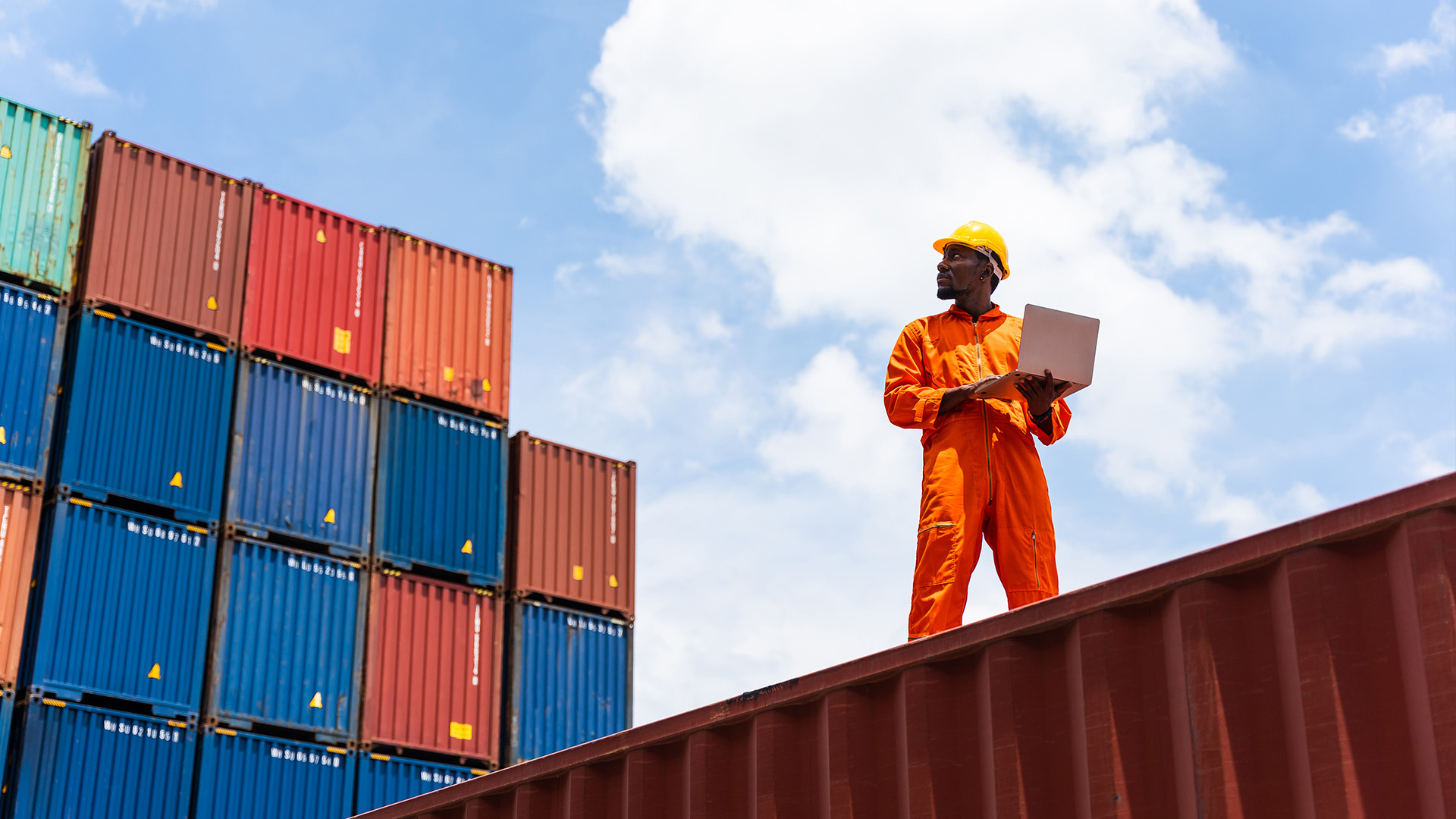
Get ready for price shocks if dockworkers and the companies they work for can’t come to terms on a contract before Tuesday.
The labor standoff is between 85,000 longshore workers and the United States Maritime Alliance, which negotiates on behalf of the port operators. A strike would shut down 36 ports from Maine to Texas that handle around half the goods shipped to the U.S. It would be the first such strike for maritime workers in nearly 50 years.
The longshore workers are calling for significantly higher wages and a ban on automating cranes, grates and moving containers as part of the loading and unloading process.
Neither side has made proposals public, but a trade publication reports the union is seeking a $5 per hour raise for each year of the contract, while operators offered half that. The union president called the offer insulting.
President Biden has the power to force longshore workers back on the job. But with about a month before Election Day, Biden said he was not planning to do so. The administration is calling on both sides to negotiate a solution.
Congress did stop a rail workers strike in 2022 at the urging of the White House.
The National Retail Federation has called on the administration to keep engaging both sides. NRF Vice President of Supply Chain and Customs Policy Jonathan Gold said in an email to Straight Arrow News:
“Many retailers have already taken steps to mitigate the potential impact of a strike by bringing in products earlier or shifting products to the West Coast. The global supply chain is a complex system and even a minor disruption would have a negative impact and cause delays at a critical time for both retailers and consumers.”
If the two sides fail to reach a deal, a strike will have a huge impact on the economy. JP Morgan transportation analysts say it could cost as much as $5 billion per day. Meanwhile, for each day ports are shuttered, it takes around 5 days to clear those extra containers.
Simone Del Rosario:
Joining us now to discuss is Patrick Penfield, Professor of supply chain practice at Syracuse University. Patrick, thank you for joining us as we’re you know, hours away from a potential strike, and I’m wondering, the holidays aren’t too far around the corner, either, would this strike have an impact on people shopping?
Hey, Simone, great to join you. And no, not right now, it won’t. So a lot of the retailers have brought in all their holiday goods they’re stocked or at the stores. In fact, you know, we’re starting to see more stuff on the stores sooner than later, right? So you’re seeing some of that Christmas and holiday stuff out right now.
Simone Del Rosario:
let’s talk about the impact of this strike, as we’ve talked about, it’s, you know, the East Coast and the Gulf Coast. About half of the products coming into the United States and coming out of the United States, coming from these ports. What sort of impact would this have?
Patrick Penfield
Yeah, so at first it’ll be minimal, but as it progresses, it’ll get worse. So every day there’s a strike that’s about five days of supply chain disruptions. So again, the beginning won’t be felt much, but I’d say after a week, then we’re going to start to feel some issues and problems, you know, for companies, specifically who, you know, get parts. I think the other thing is, just people trying to ship stuff through the East Coast also, and there’s going to be some issues there, obviously.
Simone Del Rosario
What equates that backlog? What? Why does it take multiple days for every one day?
Patrick Penfield
That’s a giant queue, so what happens is once a strike happens then you’ll start to see all these ships that will queue off the port. And then once the strike finishes then you have to process all these, you know, these ships, right? So you’re talking all these ships have been building up. And so that’s the bottleneck, the ports themselves. And then, you know, you’re talking about drayage, you’re trying to get stuff to the warehouses, and then it’s just a complete mess. And then a lot of times, you’ll see bigger customers will kind of demand that their stuff gets pushed, you know, it gets, you know, shipped first. And then, you know, the smaller companies, they don’t have that advantage or that luxury, and then they get impacted adversely. So it’s, it’s just basically, again, just a mess within the supply chain. When, when strikes
Simone Del Rosario
happen? And do you think that this strike will happen?
Patrick Penfield
Absolutely, yeah, it’s going to happen. I think the reason being is that you can see that the Daggett, who is the president of the International longshoremen on the East Coast, again, very focused on and getting what he can for his membership, and he’s also retiring. So I think this is kind of a statement for him. This might be a legacy move where you know he wants to get as much as he possibly can for his union members.
Simone Del Rosario
And the East Coast and the West Coast are different groups negotiating separately. There’s no risk of a strike on the West Coast. They already resolved their labor issues earlier this year. Are they trying to get some, you know, equality in those two agreements? Yeah, I
Patrick Penfield
think. And this is the nice thing, thankfully, that, you know, each of the coasts, they’re usually a year apart, so that way the whole country doesn’t shut down in case there’s a strike. But the West Coast longshoremen seem to have always a better contract than the East Coast longshoremen. And I think from a negotiation standpoint, I think Daggett is trying to to, you know, get some type of, you know, get some to a point where they’re both equal. And I think that is the dilemma is trying to make that happen, you know, with, you know, the maritime Association. And so I think this is, this is the issue. Another issue is automation. And so, you know, the union is against, steadfast, against automating, and that’s just because it takes away from jobs. And so sadly, the United States has some of the, the worst ports in regards to automation. You could even consider some of our ports of Thor, you know, as good as the third world countries ports, just because really not a lot of automation there. Yeah, okay,
Simone Del Rosario
let’s talk a little bit more about that automation, because that was going to be a question of mine. I mean, Wouldn’t this make things better at the ports? Wouldn’t this streamline it? And if so, like, how do you balance those two things between needing to progress from what sounds like not very advanced ports that you’re describing and balancing labor needs?
Patrick Penfield
Yeah, I think that the dilemma that we have is that the Longshoremen, they’ve always been a strong union, and so they realize that if you automate, you’re going to take away their jobs. And so, you know, this is kind of the conundrum that we’re in. You know, ideally we should be automating to streamline operations, to be able to move things in and out. But unfortunately, automation does come at a price from a job standpoint, and there will be less jobs on the ports if you automate. And so this is kind of the sticking point.
Simone Del Rosario
What do you make of the Biden administration staying out of this? I
Patrick Penfield
I think it’s a smart move. I think ideally it’s always good to try to have labor and management kind of work out these issues, if you can. That being said, eventually, if it goes on too long, I think they have to step in, just because this would cause some major issues and problems within the whole country. So I give it at least five days. I think after five days, then I think the government really needs to step in. Well,
Simone Del Rosario
five days, it’s not a very long time.
Patrick Penfield
I think that’s really all we can afford, to be quite honest with you. And I think again, if you’re the Biden administration, this is probably a worry because of the it’s an election year, right? So again, if the constituents see that there’s issues and problems here and you don’t resolve them, then that could be bad for, you know, whoever’s you know, are running for office.
Simone Del Rosario
And how do these effects ripple out to other industries? I’m thinking about trucking. And what are the ripple down effects if they go on strike?
Patrick Penfield
Yeah, so you’re going to see an increase in pricing rates, trucking rates. So you’ll see congestion again. So rates will go up. You’re going to see issues with food, because there’s a lot of food that goes through the East Coast ports, so in order to get that food, you’re going to have to air it in. And so if you air anything these days, it’s going to cost a lot more money. And so that’s kind of what you’ll see, is you’ll see prices go up. At first you’ll start to see stuff. There’ll be some availability issues, where you won’t see as much food as you do, like bananas and seafood. And then eventually, you know, the food retailers will bring that stuff in via air, and then you’ll start to see significant price increases just because you have to pay for you know how you brought that food in? Back
Simone Del Rosario
to the supply chain crunch, we go. Patrick Penfield, Professor of supply chain practice at Syracuse University. Thank you so much for weighing in today. Yeah.
Patrick Penfield
Thank you, Simone,







